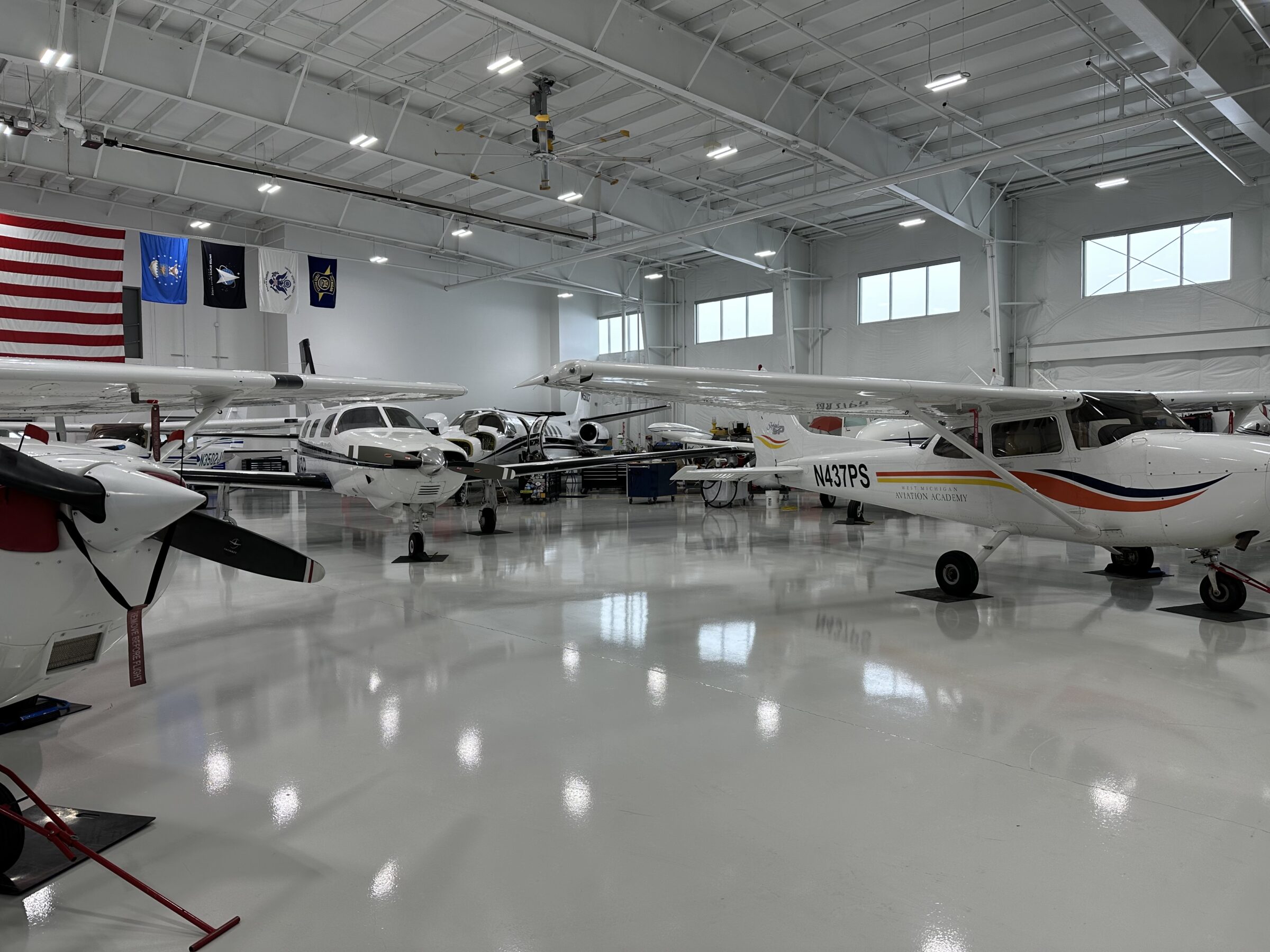The Bottom Line Students Soar at Innovative West Michigan Aviation Academy
Originally published at The Washington TimesThe average American annual salary is under $60,000, whereas the average annual salary of pilots is over $188,000 — $128,000 higher. Yet according to the Oliver Wyman consulting firm, there were 14,300 unfilled pilot positions among airlines in North America as of last fall. These positions do not require a college degree but instead specialized training, and the training need not wait until students complete high school.
At West Michigan Aviation Academy adjacent to Gerald R. Ford International Airport in Grand Rapids, students receive a high-quality academic education with specialized training in aviation, along with science, technology, engineering, math (STEM), and robotics. As a tuition-free public charter school, the school is open to any student in the state and serves 620 students each year — from various demographics and backgrounds — spanning grades nine through 12.
Some students travel more than an hour each way to receive this world-class high school education. Other families have moved to Grand Rapids or have their children live with relatives or family friends in order to attend the school. The extensive annual waitlist is further evidence of the demand.
The innovative high school was founded in 2010 by Michigan business leader Dick DeVos with the vision of broadening students’ horizons by providing skill-based learning with preparation for high-growth and high-demand career fields.
Mr. DeVos explains: “When we started this school, we did so thinking if students could see a broader horizon, they would elevate their ambitions. That philosophy still drives us today. We are always seeking to offer experiences that expand our students’ world, allowing them to explore new opportunities and discover talents and passions they didn’t know they possessed.”
By designing a high school that provides hands-on learning and excellent training for high-demand career fields, students are not only engaged and motivated but also take responsibility for their learning and rise to meet high expectations.
Keri D. Ingraham
Students complete all state-required high school graduation requirements, including earning at least 26 credits (the state requires only 18 credits) and 100 community service hours. The size of the school allows students to receive a comprehensive education with a customized approach, including dual enrollment, Advanced Placement, Early College, Career and Technical courses, and selecting from up to 20 engineering course offerings each year.
The hands-on learning experiences and professional equipping are exceptional. The school also features a build-a-plane course where students collectively assemble an FAA-certified full-size airplane containing 8,000 parts from a kit over multiple school years. The airplane is sold upon completion, with the proceeds providing funding to purchase the next assembly kit.
Alumnus Ethan Dyksterhouse enrolled in as many engineering classes as possible at the academy. Learning to build a rocket was one of his favorite experiences. He recalls: “We had to create a parachute. We designed our fins and top using CAD and 3D printers. We even learned to make our own fiberglass. When I launched my rocket . . . I could see how much I learned about physics, design, materials and more.”
The academic accomplishments at the academy are top-tier. More than 200 students completed Advanced Placement courses last year, and on average, students scored 140 points higher on the SAT than the national average. As of 2022, the school was ranked as the top charter school in Michigan and fourth among public schools in the state.
As outstanding as the academic performance and as distinct as the program offerings are, the school’s culture is equally superior. The culture centers on high expectations, individual responsibility, and respect for others. For example, students are dedicated to their learning, take ownership of their responsibilities, treat classmates with respect and collegiality, and interact with adults with a professional decorum rare today.
A key component of the students’ success is creating a learning environment that is highly attractive to teenagers and connects with post-high school opportunities. By designing a high school that provides hands-on learning and excellent training for high-demand career fields, students are not only engaged and motivated but also take responsibility for their learning and rise to meet high expectations. Staff provide learning support and mentorship, helping students achieve success. The school also creates a strong parental-school partnership, recognizing that parents play a key role in their children’s educational success.
Students can earn their private pilot’s license at West Michigan Aviation Academy, progressing from classroom instruction, simulator training, and in-flight learning to eventually take the controls, including completing solo flights.
In addition to pilot-bound students, the school also attracts those interested in aerospace design, robotics, engineering, unmanned aerial systems (drones), biomedical, and other career fields.
Mr. DeVos reflects: “Some of these students have never been in an airplane before enrolling in the school, but once they experience their first flight, they discover a passion — some going on to become professional pilots. But regardless of the career path chosen, the education students receive at West Michigan Aviation Academy will serve them well.”
Students exit the academy and matriculate to higher education or flight school or enter the workforce directly. Others commit to military service. A tribute wall within the school honors the military service of alumni, staff and board members who are veterans. Branches represented include the Air Force, Navy, Marine Corps, Coast Guard, Army and Space Force.
As Mr. DeVos says, “The higher your altitude, the broader your horizon.” West Michigan Aviation Academy is not only strategically addressing the pilot shortage but also creating an on-ramp for students toward aviation and other professions.
It gives high school students access to a high-quality academic education, paired with the cultivation of work ethic, respect, and character development, setting them on the trajectory for tremendous success in the workforce and life.


